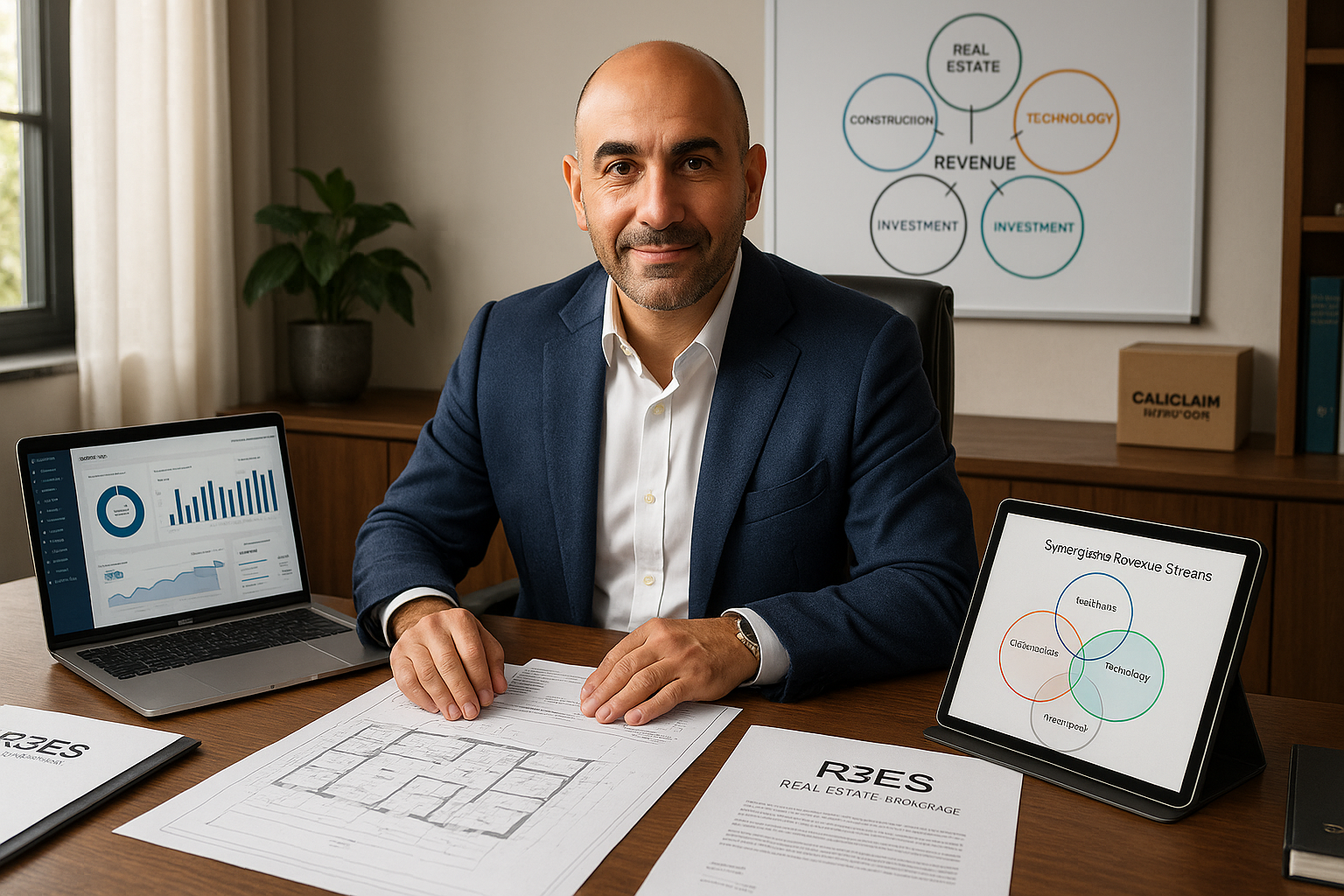The art of diversification lies not in chasing every opportunity, but in creating synergistic streams that amplify each other’s success.
After nearly three decades of building businesses across real estate, technology, and construction, I’ve learned that the key to sustainable wealth isn’t just having multiple revenue streams—it’s ensuring those streams flow in the same direction. Too many entrepreneurs fall into the “shiny object syndrome,” jumping from opportunity to opportunity without creating the strategic coherence that transforms scattered efforts into compounding success.
The Foundation: Your Core Competency
Before you can build multiple revenue streams effectively, you need to identify your zone of genius—that intersection where your skills, experience, and natural talents create maximum value. For me, this has always been strategic problem-solving combined with operational execution. Whether I’m brokering commercial real estate through R3ES, developing technology solutions at Neolynx, or managing construction projects, the underlying competency remains consistent: understanding complex systems and creating pathways where others see obstacles.
Your core competency becomes the gravitational center around which all your revenue streams should orbit. This isn’t about limiting yourself—it’s about leveraging your strengths to create exponential rather than additive growth.
The Three-Stream Framework
I’ve found that the most sustainable approach involves developing three types of revenue streams that work in harmony:
The Anchor Stream serves as your primary income source and reputation builder. This should be your most developed skill set turned into a scalable business. It provides stability and credibility that enables everything else.
The Leverage Stream takes your existing expertise and packages it differently—consulting, teaching, or licensing your knowledge. This stream typically has higher margins and requires less direct time investment once established.
The Asset Stream focuses on building long-term value through investments, real estate, or equity positions. This stream may start small but compounds over time, eventually becoming your path to true financial freedom.
Synergy Over Diversification
The magic happens when your streams start feeding each other. My real estate work provides deal flow for construction projects. Construction projects create relationships that lead to technology consulting opportunities. Technology consulting reveals market needs that become investment opportunities. Each stream strengthens the others rather than competing for resources.
Look for natural bridges between your activities. The goal isn’t to become three different people running three separate businesses—it’s to become one integrated professional whose various activities create a powerful feedback loop.
Time Architecture: The 70-20-10 Rule
Managing multiple streams without losing focus requires disciplined time allocation. I follow a 70-20-10 framework:
70% of your time goes to your anchor stream. This ensures your primary business continues growing and doesn’t suffer from divided attention.
20% of your time develops your leverage stream. This might be writing, speaking, consulting, or creating scalable products based on your expertise.
10% of your time focuses on your asset stream. This includes research, due diligence, and relationship building for investment opportunities.
This framework prevents any single stream from cannibalizing the others while ensuring each receives adequate attention to grow.
The Integration Test
Before adding any new revenue stream, ask yourself three questions:
- Does this leverage my existing expertise or relationships? If you’re starting from zero in an unrelated field, you’re not building on your advantages.
- Can this stream create value for my other activities? The best additions either feed customers to your other streams or provide resources that strengthen your core business.
- Do I have the systems to manage this without sacrificing quality elsewhere? Growth should enhance your reputation, not dilute it.
If you can’t answer “yes” to at least two of these questions, the opportunity likely isn’t right for your current stage of development.
Systems Enable Freedom
Multiple revenue streams only work if you have the operational systems to support them. This means investing in:
Clear financial tracking that shows the true profitability of each stream. Many entrepreneurs fool themselves by looking at gross revenue rather than net profit after all costs, including opportunity costs.
Automated processes wherever possible. If you’re manually managing every aspect of every stream, you haven’t built businesses—you’ve created multiple jobs.
Quality teams who can execute your vision without constant oversight. The goal is building assets that work for you, not creating more work for yourself.
The Long Game
Building multiple revenue streams is a marathon, not a sprint. The entrepreneurs who succeed in this approach understand that depth comes before breadth. Master one stream, systematize it, then thoughtfully add the next. Each addition should make the entire portfolio stronger, not just bigger.
The real power emerges after several years when your streams begin creating compound effects. Customers from one stream become clients in another. Expertise from one area creates opportunities in related fields. Investments start generating enough passive income to fund new ventures.
Remember: the goal isn’t to build a collection of side hustles. It’s to create an integrated ecosystem where your various activities amplify each other’s impact. When done correctly, multiple revenue streams don’t divide your focus—they multiply your results.
The path forward is clear: identify your core competency, build your anchor stream to stability, then thoughtfully add leverage and asset streams that create synergy rather than scatter your efforts. The wealth you build will be more sustainable, the work more fulfilling, and the impact more profound than any single stream could provide.
What revenue streams are you considering? The key is ensuring they flow in the same direction as your natural strengths and existing momentum.

